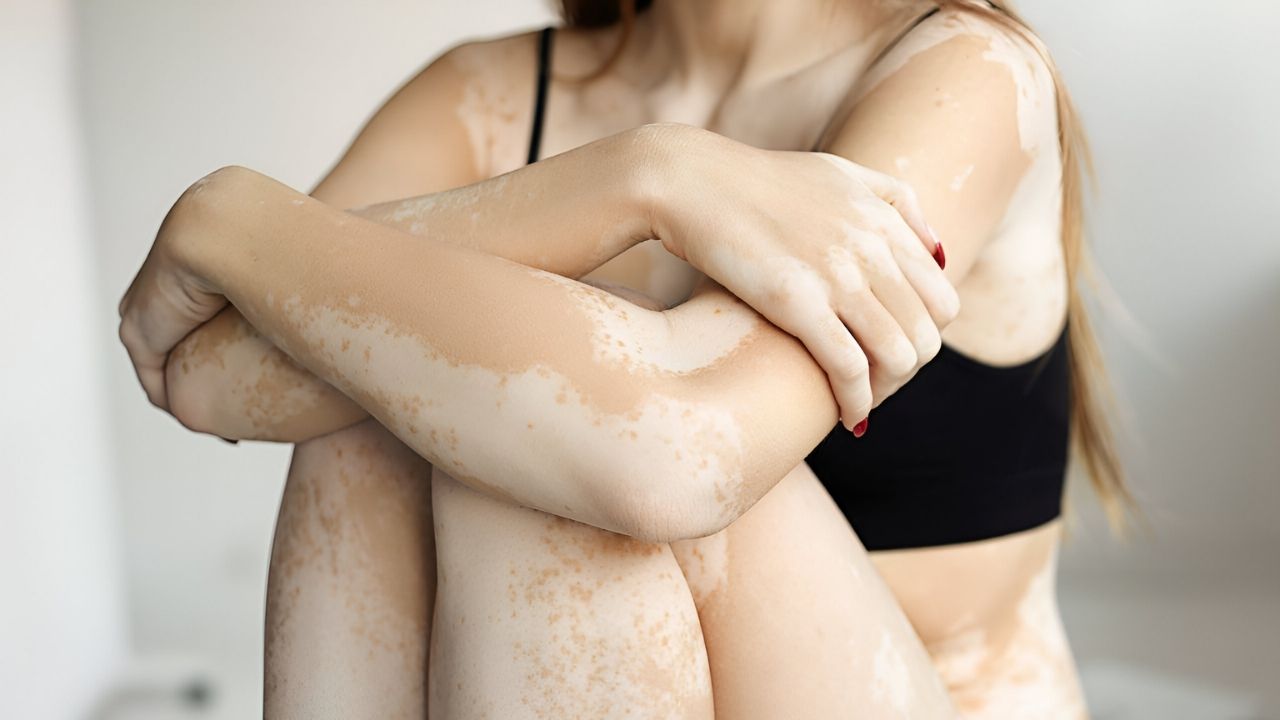
Vitiligo is a skin condition that causes loss of pigment, resulting in white patches on various parts of the body. What causes vitiligo? The exact cause remains unknown, but it is believed to be an autoimmune disorder where the immune system attacks the pigment cells. Is vitiligo contagious? No, it is not contagious or life-threatening. Can vitiligo be treated? While there is no cure, treatments like light therapy, medications, and skin grafts can help manage symptoms. Who can get vitiligo? It affects people of all skin types and ages, though it often appears before age 30. Does vitiligo affect overall health? Generally, it does not impact physical health but can affect emotional well-being. Understanding vitiligo helps in supporting those who live with this condition.
Key Takeaways:
- Vitiligo is a skin condition causing white patches. It's not contagious and can start at any age. Understanding symptoms and risk factors is important for managing the condition.
- While there's no cure for vitiligo, treatments like corticosteroids and phototherapy can help manage the condition. Support groups and sun protection are also crucial for living with vitiligo.
What is Vitiligo?
Vitiligo is a skin condition causing loss of pigment. This results in white patches appearing on different parts of the body. It can affect anyone, regardless of age, gender, or ethnicity.
-
Vitiligo affects about 1% of the global population. This means around 70 million people worldwide have vitiligo.
-
The condition is not contagious. You can't catch vitiligo from someone else, nor can you spread it.
-
Vitiligo can start at any age. While it often begins before age 20, it can appear at any time.
-
Both men and women are equally affected. Vitiligo does not discriminate based on gender.
-
The exact cause of vitiligo is unknown. Scientists believe it may be an autoimmune disorder where the body attacks its own pigment cells.
Symptoms and Types of Vitiligo
Vitiligo presents itself in various ways. Understanding the symptoms and types can help in identifying and managing the condition.
-
White patches on the skin are the main symptom. These patches can appear anywhere, including the face, hands, and feet.
-
There are two main types: segmental and non-segmental. Segmental vitiligo affects only one side of the body, while non-segmental affects both sides symmetrically.
-
Hair can also lose pigment. This includes hair on the scalp, eyebrows, eyelashes, and beard.
-
Mucous membranes may be affected. This includes tissues inside the mouth and nose.
-
The progression of vitiligo is unpredictable. Some people experience rapid loss of pigment, while others see slow changes over many years.
Causes and Risk Factors
While the exact cause remains a mystery, several factors may increase the risk of developing vitiligo.
-
Family history can play a role. If a close relative has vitiligo, your chances of developing it are higher.
-
Autoimmune diseases are linked to vitiligo. Conditions like thyroid disease, alopecia areata, and type 1 diabetes are often seen in people with vitiligo.
-
Stress and skin damage might trigger vitiligo. Emotional stress or physical trauma to the skin can sometimes precede the onset of vitiligo.
-
Exposure to certain chemicals may be a factor. Some industrial chemicals have been linked to the development of vitiligo.
-
Sunburn can exacerbate the condition. Severe sunburns can trigger new patches or worsen existing ones.
Treatment and Management
While there's no cure for vitiligo, various treatments can help manage the condition and improve the appearance of the skin.
-
Topical corticosteroids are commonly used. These creams can help restore some pigment to the skin.
-
Phototherapy is another option. This involves exposing the skin to ultraviolet light under medical supervision.
-
Surgical treatments are available. Skin grafting and melanocyte transplants can be effective for some people.
-
Depigmentation therapy is an option for extensive vitiligo. This involves lightening the remaining pigmented skin to match the white patches.
-
Cosmetic camouflage can help. Makeup and self-tanning lotions can cover white patches, making them less noticeable.
Living with Vitiligo
Living with vitiligo can be challenging, but support and understanding can make a big difference.
-
Support groups can provide emotional help. Connecting with others who have vitiligo can offer comfort and advice.
-
Education is key. Learning about vitiligo can help you manage the condition and explain it to others.
-
Sun protection is crucial. Using sunscreen and wearing protective clothing can prevent sunburn and protect sensitive skin.
-
Mental health should not be overlooked. Counseling or therapy can help cope with the emotional impact of vitiligo.
-
Awareness campaigns are growing. Increased awareness helps reduce stigma and promotes understanding of vitiligo.
Understanding Vitiligo
Vitiligo, a condition causing loss of skin color in patches, affects millions worldwide. It’s not contagious or life-threatening, but it can impact self-esteem. Knowing the facts helps in understanding and supporting those with it. Treatments like light therapy, medications, and skin grafts can help manage symptoms, though there’s no cure yet. Famous figures like Michael Jackson and Winnie Harlow have brought attention to vitiligo, showing that beauty comes in all shades. Awareness and empathy go a long way in making life easier for those affected. If you or someone you know has vitiligo, remember that support and proper care can make a big difference. Stay informed, stay compassionate, and spread the word about vitiligo.
Frequently Asked Questions
Was this page helpful?
Our commitment to delivering trustworthy and engaging content is at the heart of what we do. Each fact on our site is contributed by real users like you, bringing a wealth of diverse insights and information. To ensure the highest standards of accuracy and reliability, our dedicated editors meticulously review each submission. This process guarantees that the facts we share are not only fascinating but also credible. Trust in our commitment to quality and authenticity as you explore and learn with us.
